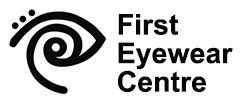Risk factors of using myopia control drug on children.
Is atropine eye drops safe our children?
Not all children would benefit from myopia control drug. Singapore myopia control study in 2015 illustrated that some children could not respond well to atropine 1% eye drops.
200 school-aged Singaporean children out of 400 were randomised to receive atropine (“muscle relaxant”) 1% eye drops for myopia control trial study. The children were followed up with cylcoplegic (“paralysed eye muscles”) auto-refraction every 4 months over 2 years to monitor the myopia progression. In the study, 12.1% children who received atropine 1% eye drop reported progression of myopia. Read the full article.
Atropine was prescribed to slow down myopia since 1960s. Higher-dose 1% eye drops ( FDA approved for treatment of amblyopia or “lazy eye” ) was introduced in 1990s in Singapore for myopia control. However, the child exposes to more UV stress and reading problem due to dilation of the pupils with higher-dose 1% eye drops. Hence, low-dose 0.01% eye drops was prescribed in recent years.
If lower dosage is administered, will that affect efficacy of myopia control? According to World Health Organisation (WHO) report in 2015, low-dose 0.01% atropine has been shown to be effective in reducing the progression of myopia but not in slowing the rate of increase of axial length of the eye. During a seven-year observation period after treatment for two years, atropine at 0.01% slowed myopia progression by 50% in children aged 6–9 years, with no apparent effect on axial length of the eye. A dose of 0.01% has few side-effects, but more research is required to determine the optimal regimen.
There are other type of myopia control besides drug. Read more about other myopia control options.
Author by #SG #optometrist, Chua Yee Leen.
